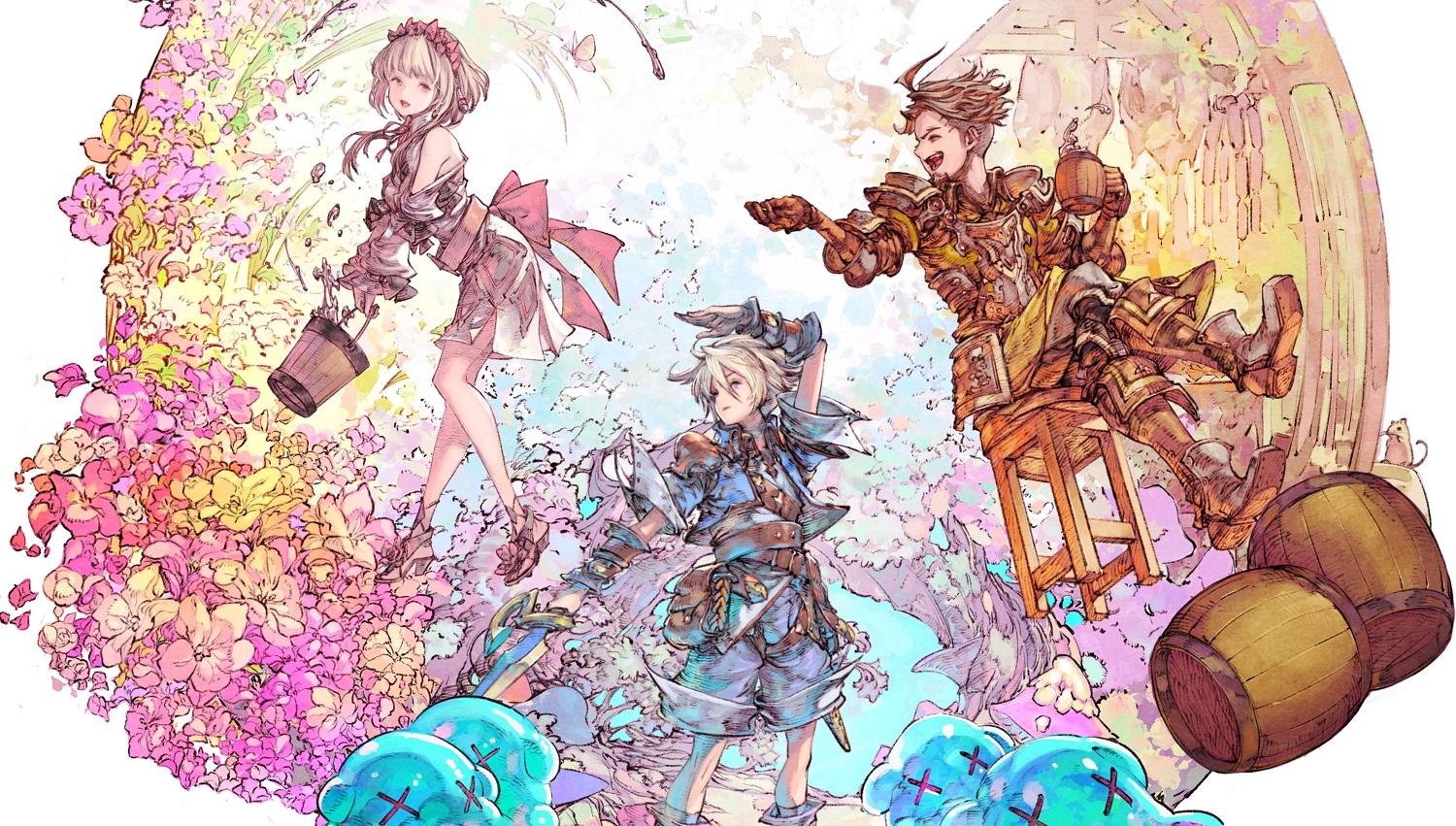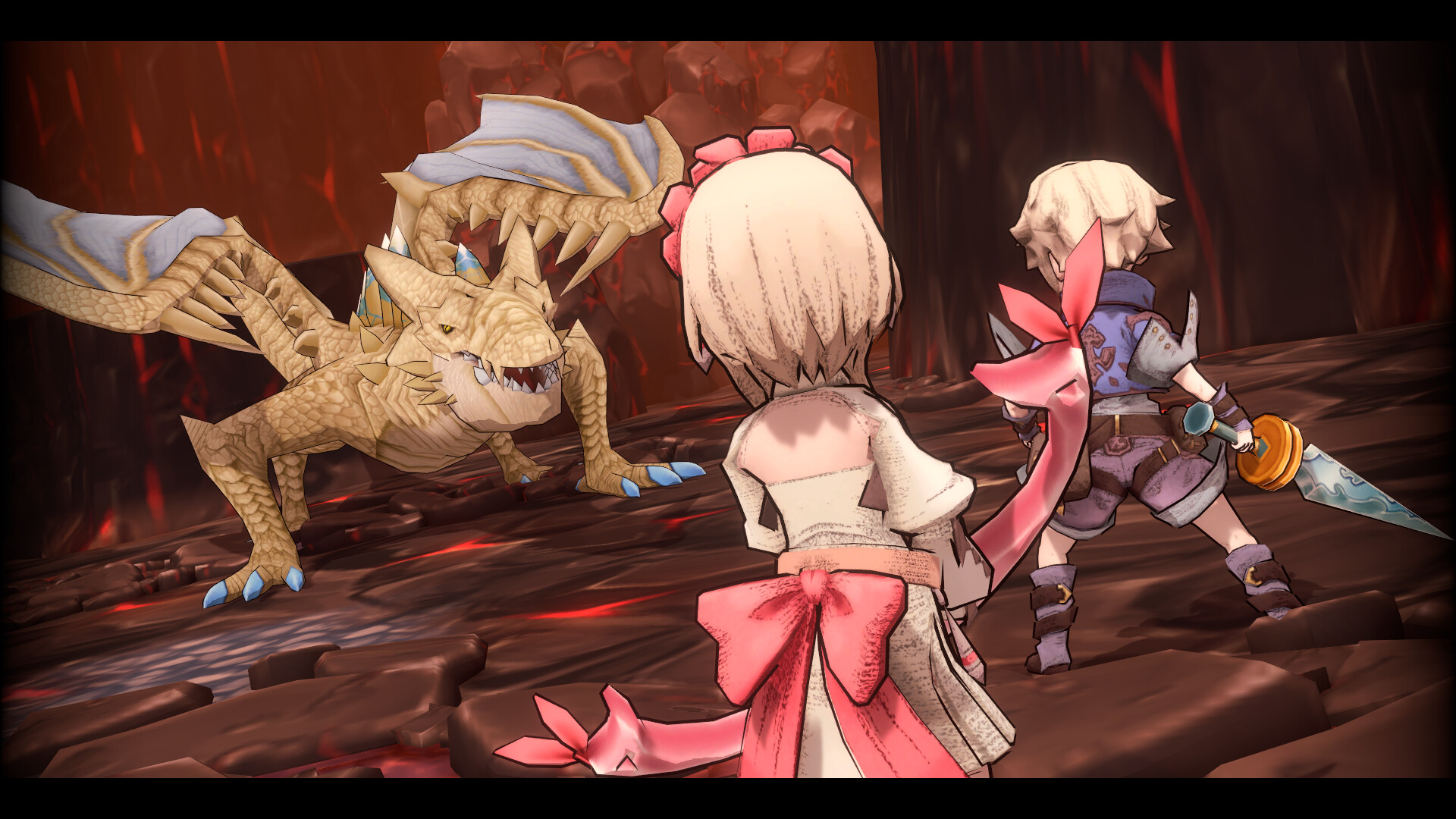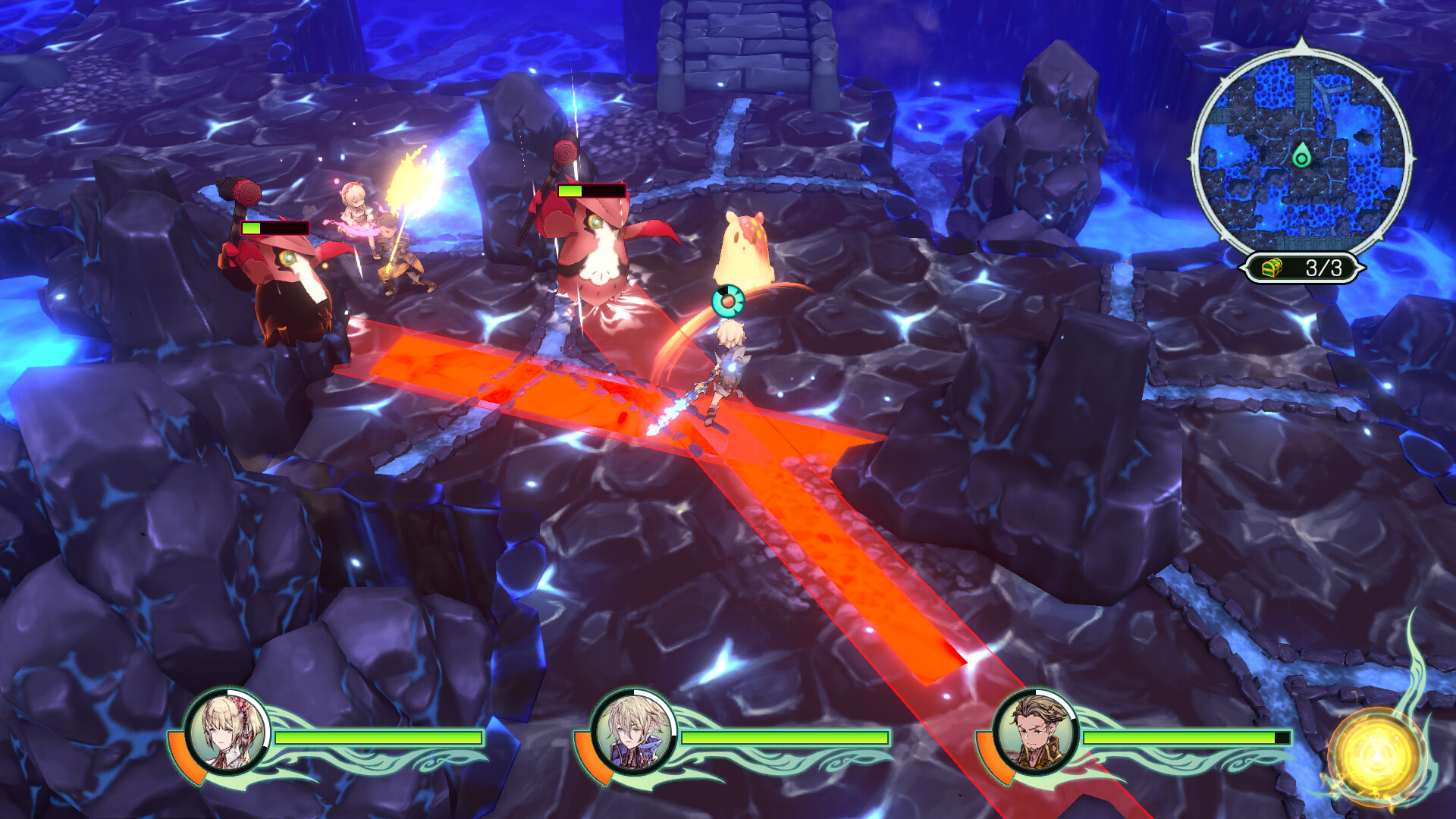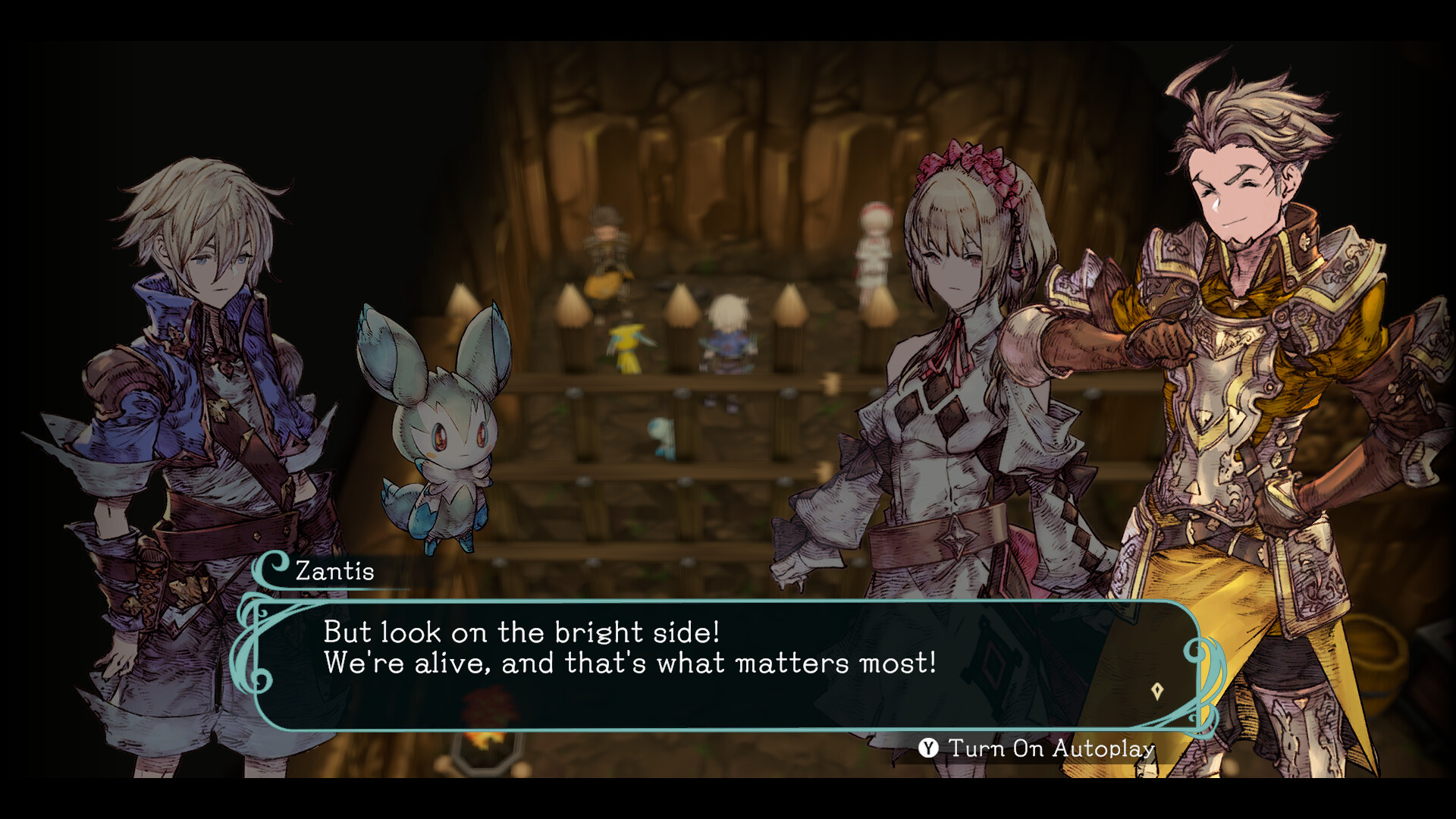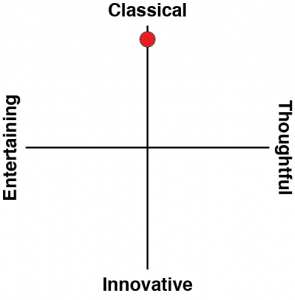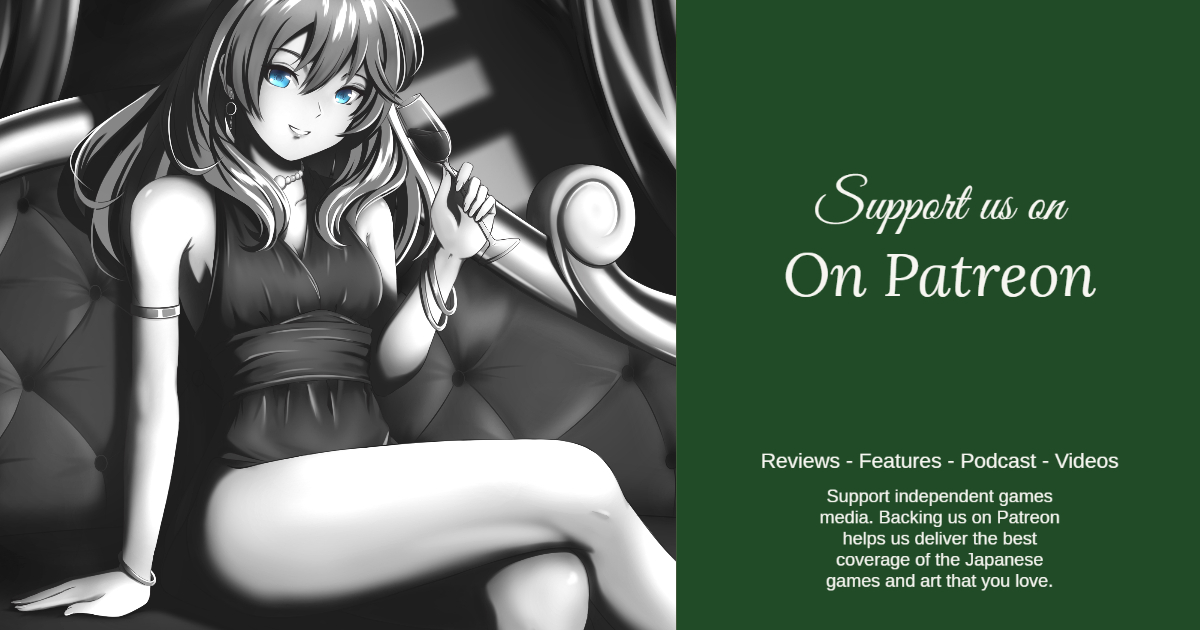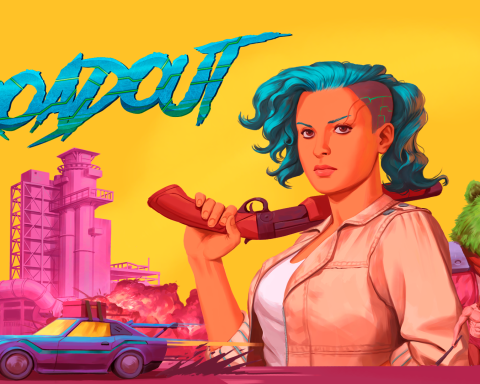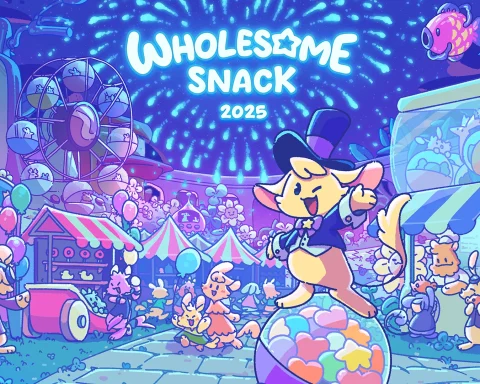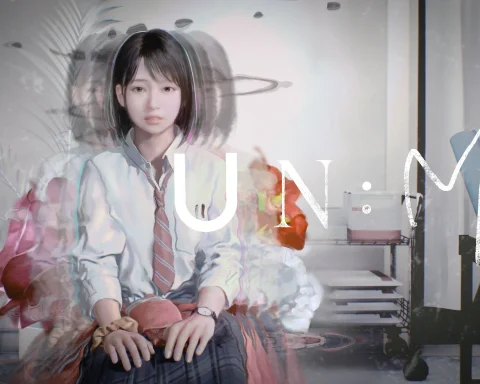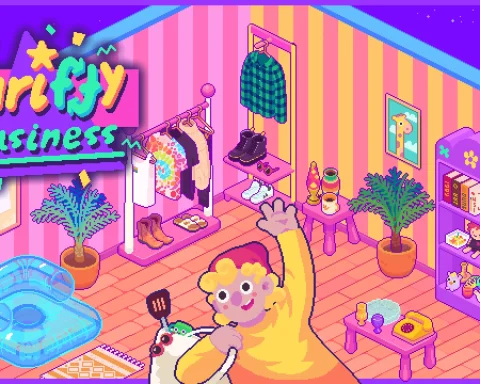Trinity Trigger set out to capture nostalgia for 90s JRPGs. That is precisely what the game delivers. Were it not for the fact that the game looks modern, I myself would have thought I was playing a long-lost classic from the era.
It is an action JRPG, where you control one of three heroes (and the other two are playable via local co-op). This immediately made me think of Secret of Mana, and that impression never really left after that. The combat has a similar quality, the enemies are similarly cute, and the same music composer that worked on Secret of Mana is behind the tunes of this one (Kikuta Hiroki). There are no overly complex combo systems or a deep web of skill trees and ability unlocks to contend with, either. You have a dodge ability, a basic and super attack, and that’s about it. With video games being as mechanically complex as they are these days, it has been nice to kick back and enjoy something that does the basics this well.
That’s not to say there is no depth, however. Trinity Trigger’s key feature is the weapon wheel. There are eight different weapons to slowly learn as the quest pushes on, and each character can switch between these weapons at will. Each major enemy and boss is more susceptible to one weapon and strategy, so being able to flexibly swap between them is key to a comfortable victory against the various adorably cute critters that you get to battle. There is also the ability to upgrade abilities on those weapons, and a basic enhancement system that allows you to attack a couple of crests to boost both attack and defence. It’s more than enough to give you the freedom to customise your characters and play style, without drowning you in an ocean of stats and min-maxing.
Progress is also structured in a traditional way. You’ll arrive in a new area (and it will be themed in some way – snow zone, forest zone etc). There you’ll find a new town to visit and a few folk to chat with while you rest and restock, before heading back out for the next challenge. Along the way are dungeons, where the toughest enemies, best rewards, and narrative drivers lie.
Again, if I wasn’t abundantly clear about this already: none of this is trying to be original. This game is the project of several industry veterans that wanted to make something dogmatically traditional. Trinity Trigger stands out because the team are so good at their craft. Everything in this game is perfectly tuned to keep you playing and driving forwards, at a good pace. Levels whizz by and towns are efficient in their layouts, without being too overloaded by people to talk to. There’s also not much of an effort with side quests and other distractions that would have slowed progress through the narrative down. While there are some reasons to backtrack (some good stuff in each area is usually locked behind a barrier that requires a weapon that you haven’t unlocked or a tough enemy you’re not ready to fight yet), even that’s a matter of quick travelling in, running off to grab the loot, and getting back on with the main quest. In lesser hands, something this derivative would have been unmemorable, but Trinity Trigger is made with such quality and an eye for detail that it stands comfortably on its own two feet.
The narrative is a fun trail of breadcrumbs to follow, too. The central protagonist, Cyan, is fated to be a warrior of chaos, and destined for a catastrophic clash with his opposite, the warrior of order. Another group attempt to assassinate him to prevent that fate. However, he’s rescued by a young woman that would rather defy fate in a less violent manner, and so the two set off on a grand journey (and are soon joined by a third) to save the world.
It’s the little things in the narrative that set it apart as a clever wink to the classics rather than a slave to them. The fact that you’re thrown into the role of chaos, rather than order, is a cute little subversion to the usual way JRPGs of the 90s were structured. There’s no grand or lengthy philosophical argument being made here, but the narrative does acknowledge that things are much more complex than “chaos = bad, order = good,” and it’s those little modern touches that help to give Trinity Trigger its own voice. Character dialogue is also written well, in a very classical way, and true to the era, you’re never bogged down by lengthy cut scenes. Characters get to the point and then the narrative pushes on.
Really the only thing about Trinity Trigger that I did not love is the way that each environment has treasure chests hidden throughout it. In every area you enter, a little note will display, telling you how many hidden treasure chests there are to find. This usually involves finding small gaps in the scenery to pass through or objects to destroy. You’ll need the loot in these chests, but it’s aggravating to look for them since this is the one feature that stops you from breezing through levels and instead bumping into every tree and wall you can find. I know “hidden treasures” was a feature of 90s JRPGs too, but this makes way too much of one of the least appealing qualities of games from that era.
The AI could have been stronger when playing by yourself, too. It’s easy to quickly swap between characters, so it’s not a game-breaking fault, but your allies like to put themselves in danger, and show very little initiative. For example, given that cycling through weapons is so critical to Trinity Trigger, the fact that AI-controlled allies don’t do that critically undermines their value. It means that in any halfway difficult battle, you’re likely to spend the first few seconds swapping between each character to set their weaponry up. If you’re not entirely sure what will work at first you’re probably going to repeat that busywork a few times.
Trinity Trigger fills a very specific niche: It’s there for people that either grew up with the likes of Secret of Mana, or who have come to appreciate them. The game wears its heart on its sleeve and risks being seen as the wrong kind of quaint by sticking to such a classical approach. Thankfully, the soul and love for the genre are so obvious that I imagine most people will be enchanted by this.
